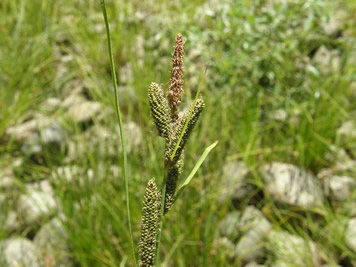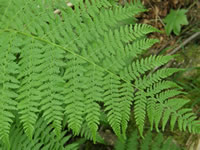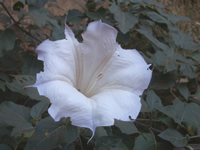Rushes and Sedges are grass-like plants often, but not always, found in damp areas.
They are important for a variety of wildlife creating places it forage, hide and live. |
SD
|
 |
__ |
 |
Slender-leaved Sedge, Carex athrostachya, is a perennial tufted herb which grows up to 3 ft/100 cm tall. The flowers are in spikes above the leaves which are in tight sheaths and flat. There are up to ten stalkless flower spikes. The plant also carries both the male and female flowers. |
SD |
 |
Western Inflated Sedge, Carex exsiccata, is another perennial herb which grows mostly under normal conditions in wetlands. marshes, edges of lakes, ponds and streams. It is native to California and is found in most of the western states and also in Iceland and Eurasia. |
| SD |
 |
|
|
Tufted Sedge, Carex lenticularis, is another of the wetland sedges growing mainly in the moist and wet conditions that so many sedges prefer. It is a slender, light yellow-green perennial plant, native to North America.
|
| |
|
SD |
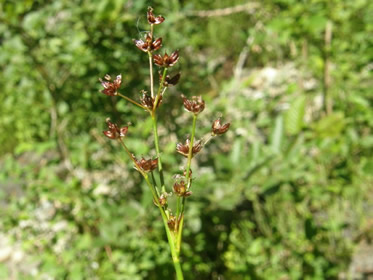 |
|
 |
Jointed Rush, Juncus articulatus, is native to Eurasia as well as Canada and the United States. It enjoys wet and moist areas including sandy places. It's a perennial with basically an erect stem which may root from the nodes. |
SD |
 |
Field Wood Rush, Luzula campestris, is a fairly short plant and can be found in most types of grassland. It carries three to six clusters of flowers between May and June. It spreads through short stolons (a type of underground stem) and seeds which develop in stemless flower clusters. |
| SD |
 |

Soft Rush, Juncus effusus |
|
Soft Rush, Juncus effusus, grows in large clumps and can reach 5 ft/1.5 m in height. It prefers the water's edge along side streams or in ditches. It can be invasive in any damp area. The stems are smooth and the flowers are yellowish and usually grow from one side of the plant. |
SD |
 |
|
 |
Common Woodrush, Luzula multiflora, is another of the perennial herbs. It is native to North America and enjoys meadows and slopes and is quite at home in both non-wetlands and wetland areas. |
SD |
 |
|
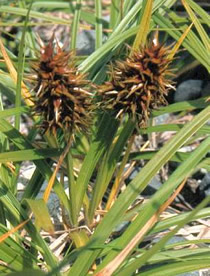 |
Large-headed Sedge, Carex macrocephela, really thrives in the sand dunes by the waters edge. It can survive in much drier conditions than most of the other sedges. The male and female flowers are on separate plants with the female having the larger flowering spikes. |
SD |
 |
|
 |
Scouring Rush, Equisetum hyemale, belongs to the Horsetail family. The stems are olive to dark green and rough in texture. It is an evergreen plant and they are usually erect. Each joint that makes up the stem is several inches long with shorter segments found higher up the stem. |
| SD |
Also at the Inn |
 |
_ |
At-A-Glance Guide to Rushes and Sedges
Rushes and Sedges are grass-like plants identified by their stems. Rushes have round stems whereas sedges are generally triangular. "Sedges have edges, rushes are round." |
|






